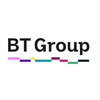


i
Ericsson
Work with us
![]()
Proud winner of ABECA 2025 - AmbitionBox Employee Choice Awards
Filter interviews by
Ericsson Solution Architect Interview Questions and Answers
6 Interview questions
To resolve a pending volume attachment issue, check instance status, volume state, and logs for errors.
Verify the instance status: Ensure the instance is running and not in a stopped or terminated state.
Check volume state: Use cloud provider tools to confirm the volume is available and not in an error state.
Review logs: Look at the instance and volume logs for any error messages that could indicate the cause of th...
Kubernetes services enable communication between pods and external traffic management through various types like NodePort, ClusterIP, and LoadBalancer.
NodePort: Exposes a service on a static port on each node's IP, allowing external access. Example: Accessing a service on port 30000.
ClusterIP: The default service type, it exposes the service on a cluster-internal IP, making it accessible only within the cluster.
Lo...
To design scalable and reliable distributed applications, consider factors like load balancing, fault tolerance, and data partitioning.
Use load balancers to distribute traffic evenly across multiple servers
Implement fault tolerance by replicating data and services across multiple nodes
Partition data to distribute it across multiple nodes and avoid bottlenecks
Use caching to reduce the load on the database
Implement ...
APN redirection, 3GDT, MME/SGSN pooling, APN configuration, and SBA in 5G are topics related to mobile network architecture.
APN redirection is the process of redirecting a user's data traffic to a different Access Point Name (APN) than the one originally requested.
3GDT stands for 3G Direct Tunneling, which allows for direct communication between the User Equipment (UE) and the Serving Gateway (SGW) without going t...
Kubernetes is an open-source container orchestration platform that automates deployment, scaling, and management of containerized applications.
Pods are the smallest deployable units in Kubernetes, while VMs are complete virtual machines with their own operating system and hardware resources.
Types of services in Kubernetes include ClusterIP, NodePort, LoadBalancer, and ExternalName.
4G and 5G are different generatio...
Call flows of Charging systems involve the process of charging customers for services rendered.
Call initiation by customer
Validation of customer details
Calculation of charges based on usage
Application of discounts or promotions
Payment processing
Confirmation of successful payment
Ericsson Solution Architect Interview Experiences
9 interviews found
I applied via Company Website and was interviewed in Oct 2024. There was 1 interview round.
(2 Questions)
- Q1. Call flows of Charging systems
- Ans.
Call flows of Charging systems involve the process of charging customers for services rendered.
Call initiation by customer
Validation of customer details
Calculation of charges based on usage
Application of discounts or promotions
Payment processing
Confirmation of successful payment
- Q2. Functional overview/Architecture of Charging system
- Ans.
Charging system architecture involves components like charging stations, billing systems, and user interfaces.
Charging system typically consists of charging stations where users can plug in their devices.
Billing systems track usage and calculate charges based on factors like time and energy consumption.
User interfaces allow users to monitor charging status and make payments.
Integration with payment gateways for secure ...
R1: Past project
R2: Coding Round
R3: interview with tech head
I appeared for an interview before Jun 2024, where I was asked the following questions.
- Q1. How you will fix the volume attachment issue for instance which is in pending state.
- Ans.
To resolve a pending volume attachment issue, check instance status, volume state, and logs for errors.
Verify the instance status: Ensure the instance is running and not in a stopped or terminated state.
Check volume state: Use cloud provider tools to confirm the volume is available and not in an error state.
Review logs: Look at the instance and volume logs for any error messages that could indicate the cause of the iss...
- Q2. Describe affinity and antiaffinity
- Ans.
Affinity and antiaffinity are concepts in resource allocation, determining how resources are grouped or separated in systems.
Affinity refers to the tendency of similar resources to be placed together, enhancing performance and reducing latency.
Example: In a cloud environment, placing web servers that handle similar traffic patterns on the same physical host.
Antiaffinity ensures that certain resources are kept apart to ...
- Q3. Describe services in kubernetes(node, clusterIp, and load balancer)
- Ans.
Kubernetes services enable communication between pods and external traffic management through various types like NodePort, ClusterIP, and LoadBalancer.
NodePort: Exposes a service on a static port on each node's IP, allowing external access. Example: Accessing a service on port 30000.
ClusterIP: The default service type, it exposes the service on a cluster-internal IP, making it accessible only within the cluster.
LoadBal...
- Q4. What is service account in kubernetes
- Ans.
A service account in Kubernetes provides an identity for processes running in a pod to interact with the Kubernetes API.
Service accounts are used to manage permissions for pods and their interactions with the Kubernetes API.
Each service account is associated with a set of credentials (token) that pods can use for authentication.
By default, Kubernetes creates a 'default' service account in each namespace.
Service account...
- Q5. How to scale in and scale out replicaset
- Ans.
Scaling in and out a ReplicaSet involves adjusting the number of pod replicas to manage load and resource utilization.
Use 'kubectl scale' command to increase or decrease replicas, e.g., 'kubectl scale rs my-replicaset --replicas=5'.
Monitor application performance and resource usage to determine when to scale in or out.
Implement Horizontal Pod Autoscaler (HPA) for automatic scaling based on CPU/memory metrics.
Consider u...
I applied via Naukri.com and was interviewed before May 2023. There were 3 interview rounds.
(1 Question)
- Q1. Cloud deployment flow
(1 Question)
- Q1. Behavioral interview
(1 Question)
- Q1. Salary discussed
Interview Questionnaire
1 Question
- Q1. A lot and lot of in depth technical questions.
Interview Preparation Tips
I applied via Referral and was interviewed in Jun 2021. There were 3 interview rounds.
Interview Questionnaire
2 Questions
- Q1. Tell me about yourself
- Q2. Again tell me about yourself
Interview Preparation Tips
Interview Questionnaire
1 Question
- Q1. What you work ..they will ask over that. If their requirement they will hire. They will not ask too much. Good interview.
I applied via Referral and was interviewed before Jun 2021. There were 3 interview rounds.
(2 Questions)
- Q1. What is AAA and AAAA query?
- Ans. AAA query is for IPv4 and AAAA are for ipv6
- Q2. What is APN redirection? what is 3GDT? What is MME/SGSN pooling? How APN configuration is done? What is SBA in 5G Cal flow for 4G and 5G
(1 Question)
- Q1. What is Kubernets? what is difference between pod and VM what are different type of services in kubernetes what is difference between 4G and 5G what are messages in PFCP protocol. Interfaces in 4G and 5G
(1 Question)
- Q1. HR is simple round. Nothing specific to share.
Interview Preparation Tips
Prepare for 4G and 5G call flow.
Skills evaluated in this interview
I applied via Naukri.com and was interviewed before Nov 2020. There was 1 interview round.
Interview Questionnaire
1 Question
- Q1. How you design scalable and reliable distributed application
Interview Preparation Tips
Top trending discussions






Interview questions from similar companies

I applied via Referral and was interviewed in Feb 2020. There were 5 interview rounds.
Interview Questionnaire
1 Question
- Q1. All conceptual questions and some basic configuration and tshoot questions related to my domain/technology/work
Interview Preparation Tips
Ericsson Interview FAQs
Some of the top questions asked at the Ericsson Solution Architect interview -
Tell us how to improve this page.
Ericsson Interviews By Designations
- Ericsson Network Engineer Interview Questions
- Ericsson Solution Integrator Interview Questions
- Ericsson Software Engineer Interview Questions
- Ericsson Graduate Engineer Trainee (Get) Interview Questions
- Ericsson Software Developer Interview Questions
- Ericsson Integration Engineer Interview Questions
- Ericsson Senior Engineer Interview Questions
- Ericsson Senior Solution Integrator Interview Questions
- Show more
Interview Questions for Popular Designations
- Software Engineer Interview Questions
- Architect Interview Questions
- Technical Architect Interview Questions
- Vice President Interview Questions
- Senior Architect Interview Questions
- Senior Solution Architect Interview Questions
- Software Architect Interview Questions
- Cloud Architect Interview Questions
- Show more
Overall Interview Experience Rating
based on 5 interview experiences
Difficulty level
Duration
Interview Questions from Similar Companies
Ericsson Solution Architect Reviews and Ratings
based on 224 reviews
Rating in categories
|
Senior Solution Integrator
2.3k
salaries
| ₹12 L/yr - ₹21 L/yr |
|
Solution Architect
2.3k
salaries
| ₹20 L/yr - ₹34.7 L/yr |
|
Senior Engineer
2.2k
salaries
| ₹9.8 L/yr - ₹17 L/yr |
|
Network Engineer
1.8k
salaries
| ₹3.2 L/yr - ₹7.8 L/yr |
|
Solution Integrator
1.7k
salaries
| ₹5 L/yr - ₹12 L/yr |

Jio

Vodafone Idea

Bharti Airtel

Tata Communications
- Home >
- Interviews >
- Ericsson Interview Questions












